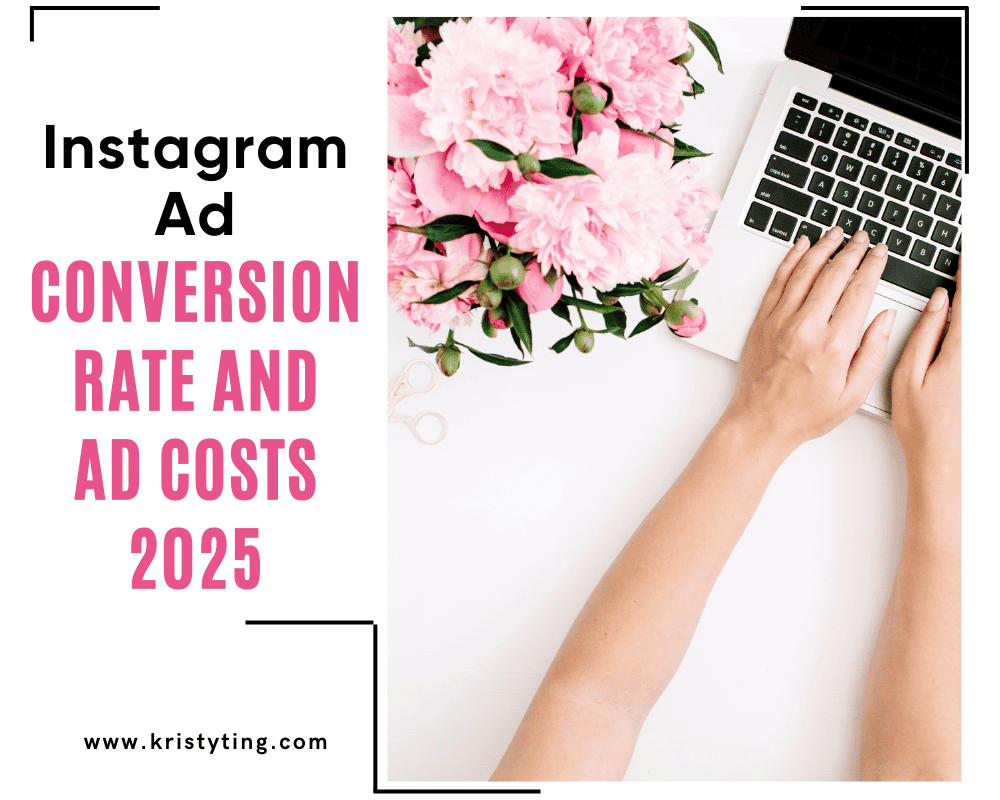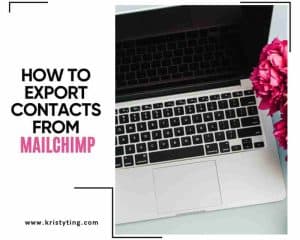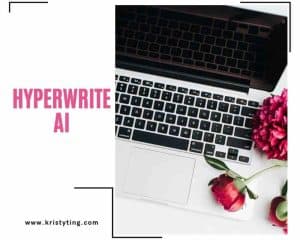This post may contain affiliate links. If you use these links to buy something we may earn a commission at no extra cost to you. Thank you for your support!
Instagram has become a popular platform for businesses to advertise their products or services. Instagram’s visual nature and large user base make it an attractive option for advertisers. In this blog post, we’ll discuss the current industry figures for Instagram ad conversion rate, the costs of running Instagram ads, the factors that affect conversion rates and ad costs, and why people use Instagram ads in 2025.
People use Instagram ads in 2025 for a variety of reasons. One of the primary reasons is to reach a larger audience and increase brand awareness. Instagram ads allow businesses to target specific demographics and interests, making it easier to reach potential customers. Additionally, Instagram ads can help businesses drive website traffic, increase sales, and promote new products or services.
According to a report by Hootsuite, the average Instagram ad conversion rate for Instagram ads across all industries in 2021 was 1.08%. However, the conversion rate can vary greatly depending on the industry and the specific product or service being advertised. For example, the conversion rate for e-commerce ads was 1.85%, while the average conversion rate (or average CTR) for healthcare and pharmaceutical ads was 0.56%. It’s important to keep in mind that these rates are constantly changing and can be influenced by a variety of factors.
Cost Per Click (CPC) On Instagram In 2021
The cost of an Instagram ad can vary widely depending on the type of ad, the audience you’re targeting, and the industry you’re in. In general, the cost per click (CPC) for an Instagram ad can range from $0.20 to $2.00. However, it’s important to note that an Instagram ad cost can be much higher for competitive industries or highly-targeted audiences. The cost per impression (CPM) can range from $2.50 to $10.00.
Cost Per Impression (CPM) On Instagram In 2021
Here are some figures that can give you a better understanding of how these factors can affect the conversion rate and cost of an Instagram ad:
- Number of Followers: According to a study by Influencer Marketing Hub, Instagram accounts with less than 1,000 followers have an average engagement rate of 8%, while accounts with over 100,000 followers have an average engagement rate of 1.60%. This means that smaller accounts may be able to achieve a higher conversion rate with a smaller ad spend compared to larger accounts.
- Engagement Rate: The higher your engagement rate, the more likely it is that your audience will interact with your ad and convert. According to a report by Hopper HQ, the average engagement rate on Instagram is 1.22%. However, accounts in certain industries, such as beauty and fashion, may have a higher engagement rate, which can lead to a higher conversion rate and a lower ad spend.
- Industry: As mentioned earlier, the industry you’re in can greatly affect your conversion rate and ad cost. For example, according to a report by AdEspresso, the average cost per click for Instagram ads in the apparel industry is $0.45, while the average cost per click for ads in the finance industry is $3.77.
- Type of Ad: Different types of ads can have different conversion rates and costs. For example, carousel ads tend to have a higher conversion rate than a single image or video ads because they allow for more product or service showcasing. However, carousel ads may also have a higher cost per click due to their more engaging format.
- Audience: The audience you’re targeting can also affect your conversion rate and ad cost. For example, if you’re targeting a highly-specific niche audience, your ad may have a lower conversion rate but a lower cost per click. On the other hand, if you’re targeting a broad audience, your ad may have a higher conversion rate but a higher cost per click.
The Cost of Instagram Ads vs. The Cost of Facebook Ads
The cost of Instagram ads vs. Facebook ads can vary depending on several factors, including the ad placement, target audience, ad format, and bid amount. While Instagram is owned by Facebook and has a similar ad platform, there are some differences in cost and performance between the two platforms. Here’s a breakdown of the cost comparison between Instagram ads and Facebook ads:
- Average Cost: According to a report by AdEspresso, the average cost per click (CPC) for Instagram ads is $0.50, while the average CPC for Facebook ads is $0.97. However, it’s important to note that the cost can vary depending on the ad placement and target audience.
- Ad Placement: Both Instagram and Facebook offer several ad placement options, including the feed, stories, and explore. The cost per click can vary depending on the placement, with ads on Instagram stories tending to have a lower cost per click than feed ads. According to a report by Hootsuite, the average cost per click for Instagram story ads is $0.45, while the average cost per click for Instagram feed ads is $0.69.
- Target Audience: The target audience can also affect the cost of Instagram and Facebook ads. Facebook offers a more extensive targeting option, including interests, behaviors, and demographics. This makes it easier to target specific audiences and can lead to a lower cost per click. However, Instagram’s targeting options have improved in recent years and now offer similar targeting options to Facebook.
- Ad Format: Both Instagram and Facebook offer several ad formats, including image, video, carousel, and collection ads. The ad format can affect the cost per click, with video ads tending to have a higher cost per click than image ads. However, video ads can also have a higher engagement rate and conversion rate than image ads.
- Bid Amount: The bid amount can affect the cost per click for both Instagram and Facebook ads. The bid amount is the maximum amount a business is willing to pay for a click or impression. A higher bid amount can lead to a higher ad placement and a lower cost per click.
In general, Instagram ads cost and Facebook ads cost are comparable, with Instagram tending to have a slightly lower average CPC. However, the cost can vary depending on the ad placement, target audience, ad format, and bid amount. It’s important to test and monitor both platforms to determine the best platform for your advertising goals and budget. More about Facebook conversion rates here.
The Benefits of Using Instagram Ads
- High Engagement Rates: Instagram has a highly engaged user base, with over one billion monthly active users. Instagram users are more likely to engage with ads than users on other social media platforms, with an average engagement rate of 1.22%. This makes Instagram a great platform for businesses to increase brand awareness and engage with potential customers, leading to a higher action rate and a good return on investment (ROI).
- Targeted Advertising: Instagram’s targeting options allow businesses to reach a specific audience based on interests, behaviors, demographics, and specific actions taken. This targeting can help businesses reach the right people with their ads, leading to a higher conversion rate and a lower cost per click. Instagram also offers lookalike targeting, which can help businesses reach potential customers who are similar to their existing customer base.
- Visual Nature: Instagram is a highly visual platform, which makes it ideal for businesses in industries such as fashion, beauty, and food. Instagram’s visual nature allows businesses to showcase their products or services in a more engaging way, leading to a higher click-through rate (CTR) and higher conversion rates. High-quality ads and an effective Instagram advertising campaign can lead to profile views, website conversions, and total revenue.
- Ad Format Options: Instagram offers several ad format options, including image, video, carousel, and story ads. This variety allows businesses to choose the format that works best for their specific advertising goals. For example, video ads may be more effective for promoting a new product or service, while carousel ads can showcase multiple products or services in one ad. Instagram videos also tend to have the highest engagement rates among different ad formats.
- Integration with Facebook: Instagram is owned by Facebook and is integrated with Facebook’s ad platform. This integration allows businesses to manage both their Instagram and Facebook ads in one place, making it easier to create and monitor social media ads. It also allows businesses to take advantage of Facebook’s targeting options, ad network, and industry benchmarks to optimize their Instagram ad campaign. By using Instagram and Facebook ads together, businesses can reach a larger audience and achieve their business goals at a lower cost per action (CPA).
In summary, businesses should consider using Instagram ads for their social media marketing because of the platform’s high engagement rates, targeted advertising options, visual nature, ad format options, and integration with Facebook’s ad platform. By using the right ad set, bid amount, and campaign objective, businesses can effectively reach their targeted audience, drive website conversions, and increase total revenue.
What Are The Different Factors Affecting The Cost of Instagram Advertising And An Instagram Ad Conversion Rate?
- Bid Amount: The bid amount is the maximum amount a business is willing to pay for a click or impression. A higher bid amount can lead to a higher ad placement and a lower cost per click. Businesses can adjust their bid amount based on the competition and the estimated cost per action (CPA) for their specific targeting and ad format.
- Relevance Score: The relevance score is a metric that measures the quality and relevance of an ad to its target audience. The relevance score can affect the ad’s cost and placement, with a higher relevance score leading to a lower cost per click. Businesses can improve their relevance score by using high-quality ads, targeting the right audience, and creating an effective Instagram ads campaign.
- Estimated Action Rates: The estimated action rate is the likelihood of a user taking a specific action, such as clicking a link or making a purchase, based on the ad’s targeting and format. The estimated action rate can affect the ad’s cost, with a higher estimated action rate leading to a lower cost per click. Businesses can improve their estimated action rate by using effective ad copy, choosing the right ad format, and targeting the right audience.
- Competition: The competition can affect the cost of Instagram advertising, with higher competition leading to higher costs. Businesses in highly competitive industries may need to invest more in their ad spend to achieve a desirable conversion rate. Advertisers can monitor their competition and adjust their bid amount and targeting to improve their ad’s performance.
- Time of Year, Day, or Week: The time of year, day, or week can also affect the cost of Instagram advertising. For example, during the holiday season, competition may be higher, leading to a higher cost per click. Advertisers can use this information to adjust their bid amount and targeting to optimize their ad’s performance.
- Target Audience: The target audience can affect the cost of Instagram advertising, with niche audiences often having a higher cost per click due to the smaller audience size. Advertisers can use lookalike targeting to expand their audience and improve their ad’s performance. Most Instagram ads target women, seeing as women make up the larger base of Instagram’s users.
- Market: The market can affect the cost of Instagram advertising, with businesses in highly competitive markets often paying a higher cost per click. Advertisers can monitor the market and adjust their bid amount and targeting to optimize their ad’s performance for best results.
How Can I Lower the Cost of My Instagram Ads?
Image source: AdEspresso
Use Automatic Bidding
Automatic bidding is a bidding strategy that allows businesses to set a maximum bid amount and let Instagram’s algorithm adjust the bid amount based on the competition and estimated cost per action (CPA). This strategy can help businesses achieve their advertising goals at a lower cost per click or action. By using automatic bidding, businesses can avoid overbidding for ad placement and save money on their ad spend. Instagram’s algorithm optimizes ad delivery based on the likelihood of achieving the desired action rate, which can help businesses achieve their goals at a lower cost.
Precise Targeting
Precise targeting allows businesses to reach a specific audience based on interests, behaviors, demographics, and specific actions taken. By targeting the right audience, businesses can improve their estimated action rate and achieve a lower cost per click. Instagram’s targeting options include custom audiences, lookalike targeting, and interest-based targeting, which can help businesses reach their ideal customers. Businesses can also exclude specific audiences or behaviors to avoid targeting users who are less likely to convert.
Set Goals
Setting clear business goals and choosing the right campaign objective can help businesses optimize their ad’s performance and achieve a lower cost per action. Instagram offers several campaign objectives, including awareness, consideration, and conversion. By setting clear goals and choosing the right objective, businesses can optimize their ad’s delivery and improve their estimated action rate. Businesses should also track their ad’s performance and adjust their bid amount and targeting based on the results.
Create Good Landing Pages
A good landing page can improve the ad’s conversion rate and lead to a lower cost per action. A landing page should be relevant to the ad’s messaging and have a clear call-to-action that encourages users to take the desired action. Businesses should also ensure that the landing page is optimized for mobile devices and has a fast loading speed. A good landing page can improve the user experience and lead to higher conversion rates, which can help businesses achieve their advertising goals at a lower cost.
Test Different Ads
Testing different ad formats, ad copy, and targeting can help businesses identify which ads perform best and achieve a lower cost per action. By monitoring ad performance and making data-driven decisions, businesses can optimize their Instagram ads campaign and achieve their advertising goals at a lower cost. Businesses should also use A/B testing to compare different ad formats or targeting options and identify which ads perform best. The best way to keep Instagram advertising costs at a low is by continuously testing and optimizing their ads. This way businesses can improve their ad’s performance and achieve a higher conversion rate at a lower cost.
A Step-By-Step Guide On How To Create An Instagram Ad:
- Set up a Facebook Page: In order to create an Instagram ad, you’ll need to have a Facebook Page. You can create a Facebook Page by logging into your Facebook account and clicking on “Create” at the top right corner of the screen. Follow the prompts to set up your Page.
- Connect your Instagram Account: Once you have a Facebook Page, you can connect your Instagram account to your Page. To do this, go to your Page and click on “Settings” at the top right corner of the screen. From there, click on “Instagram” in the left-hand menu and follow the prompts to connect your account.
- Choose Your Campaign Objective: To start creating an Instagram ad, go to Facebook Ads Manager and click on “Create.” Choose your campaign objective based on your advertising goals, such as brand awareness, traffic, or conversions.
- Define Your Target Audience: After selecting your campaign objective, you’ll need to define your target audience. You can select a pre-defined audience or create a custom audience based on interests, behaviors, demographics, and specific actions taken.
- Set Your Ad Budget: Next, set your ad’s daily budget based on your advertising goals and budget. You can choose a daily or lifetime budget and adjust your bid amount based on the competition and estimated cost per action (CPA).
- Choose Your Ad Format: Instagram offers several ad format options, including image, video, carousel, and story ads. Choose the ad format that best fits your advertising goals and create high-quality ad creative that catches the attention of your target audience.
- Design Your Ad Creative: Once you’ve selected your ad format, design your ad creative using high-quality images or videos that showcase your products or services. Make sure your ad creative is visually appealing and fits the ad format you’ve chosen.
- Add Ad Text and Call-to-Action: After designing your ad creative, add ad text that complements your ad creative and encourages users to take action. Include a clear call-to-action that encourages users to click, learn more, or make a purchase.
- Preview and Publish Your Ad: Preview your ad to ensure that it looks good on all devices and meets Facebook’s ad policies. Once you’re satisfied with your ad, publish it and monitor its performance in Facebook Ads Manager.
Summary
In conclusion, Instagram ads are a valuable advertising tool for businesses looking to reach a large and engaged audience on the social platform. By understanding the industry average for Instagram ad conversion rates, the factors that affect the cost of Instagram advertising, and the benefits of using Instagram ads, businesses can optimize their ad’s performance and achieve their advertising goals effectively. Additionally, by following best practices such as precise targeting, setting goals, and creating good landing pages, businesses can lower the cost of their Instagram ads and achieve a higher conversion rate.
To calculate the conversion rate of an Instagram ad, use the following formula:
Conversion Rate = (Total Conversions / Total Clicks) x 100%
For example – if you had 10,000 people land on your landing page and 100 of them made a purchase, you would have a 1% conversion rate. This is actually a good conversion rate and can continue to be optimized.
The total conversions refer to the number of people who completed the desired action, such as making a purchase, signing up for a free trial or filling out a form, after clicking on the ad. The total clicks refer to the number of users who clicked on the ad. By tracking your ad’s performance and calculating the conversion rate, you can identify areas for improvement and optimize your ad’s performance for a higher conversion rate and a good return on investment.
In summary, Instagram ads offer businesses a great opportunity to reach a large and engaged audience on social media. By understanding the industry average for conversion rates, the factors that affect the cost of Instagram advertising, and best practices for optimizing ad performance, businesses can achieve their advertising goals and effectively reach their target audience on Instagram.





